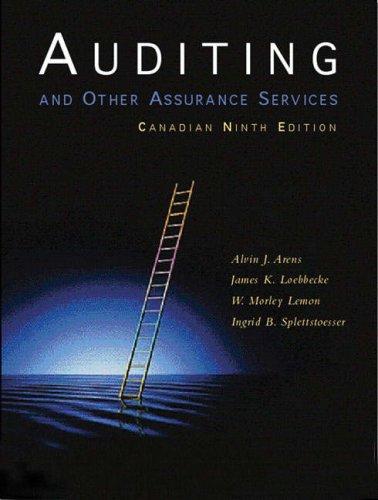Question
Olsen Ropes, a Norwegian Company, produces ropes exclusively for the maritime industry since 1777. Through a standardized product range Olsen Ropes can cover all customer
Olsen Ropes, a Norwegian Company, produces ropes exclusively for the maritime industry since 1777. Through a standardized product range Olsen Ropes can cover all customer rope needs. Olsen Ropes are used on some of the worlds largest and most technologically advanced vessels. Olsen Ropes are marketing their ropes under the trademark Ropol. The company produces five different styles of ropes for different ship types: Bulker, Tanker, Container, Offshore, and Cruise, in a highly automated batch machining process. The following table summarizes the production and cost data for the five products. Product Annual Volume (Units) Direct Labor per Unit Direct Material per Unit RopolTM Bulker 6,600 kr 119 kr 1,079 RopolTM Tanker 4,000 kr 129 kr 1,204 RopolTM Container 3,000 kr 139 kr 1,329 RopolTM Offshore 1,200 kr 159 kr 1,579 RopolTM Cruise 750 kr 179 kr 1,829 Annual overhead is kr 12,900,000. Required: a. Compute the total unit cost of each rope type (RopolTM-Bulker, RopolTM-Tanker, RopolTM-Container, RopolTM-Offshore, RopolTM-Cruise) using absorption costing. Overhead is assigned to individual products using direct labor cost. b. Upon further analysis, you discover that the annual overhead of kr 12,900,000 consists entirely of the highly automated machining process. Each rope type is produced in batches with ropes of the same type. Each batch requires the same amount of machine time. That is, producing a batch of 220 RopolTMBulker ropes requires the same amount of machine time as a batch of 50 RopolTMCruise ropes. The following table summarizes the batch size for each rope type: Product Batch Size RopolTM Bulker 220 RopolTM Tanker 200 RopolTM Container 150 RopolTM Offshore 80 RopolTM Cruise 50 Compute the unit cost of each rope type (RopolTM-Bulker, RopolTM-Tanker, RopolTM-Container, RopolTM-Offshore, RopolTM-Cruise) using activity-based costing. c. Prepare a table comparing the activity-based cost and absorption cost of each product. Discuss why the product costs differ between the two costing methods
Step by Step Solution
There are 3 Steps involved in it
Step: 1

Get Instant Access to Expert-Tailored Solutions
See step-by-step solutions with expert insights and AI powered tools for academic success
Step: 2

Step: 3

Ace Your Homework with AI
Get the answers you need in no time with our AI-driven, step-by-step assistance
Get Started


